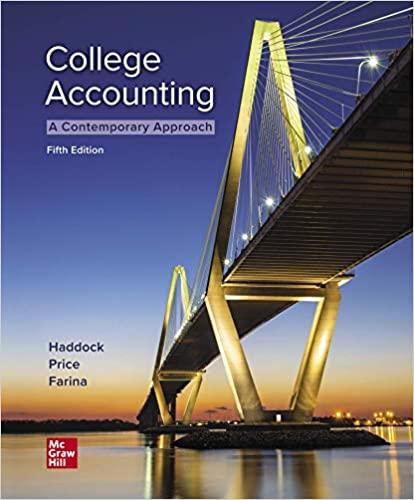Question
Peter earns $400,000 of ordinary salary income annually from his primary job and earned a $3,000 net long-term capital gain from selling Gamestop stock this
Peter earns $400,000 of ordinary salary income annually from his primary job and earned a $3,000 net long-term capital gain from selling Gamestop stock this year. His only charitable contribution is $50 that he gave to the Red Cross. He itemizes all of his deductions.
Peter also owns 10% of the Orange Partnership. Peter's K-1 form indicates that his share of the partnership's ordinary income was $50,000, his share of the partnership's charitable contributions was $700, and his share of the partnership's capital losses was $8,000 during 2020. On January 1, 2020, Jonathan had a basis in his partnership interest equal to his inital capital contribution of $500,000. The partnership did not have any other income or deductions. It current assets principally were inventory that had appreciated by $20,000 as of year-end and it had current liabilities of $60,000.
a. By what amount, if any, do the charitable contributions on Peter's Form K-1 reduce Peter's taxable income, compared to what his taxable income otherwise would have been if he had not been a member of this partnership?
b. By what amount, if any, does the capital loss on Peter's Form K-1 reduce his taxable income, compared to what it otherwise would have been if he had not been a member of this partnership?
c. What is Peter's basis in his ownership interest at year-end?
d. Would you answer to (b) above have been different if Orange had been an S Corporation rather than a partnership?
e. Would you answer to (c) above have been different if Orange had been an S Corporation rather than a partnership?

Step by Step Solution
There are 3 Steps involved in it
Step: 1

Get Instant Access to Expert-Tailored Solutions
See step-by-step solutions with expert insights and AI powered tools for academic success
Step: 2

Step: 3

Ace Your Homework with AI
Get the answers you need in no time with our AI-driven, step-by-step assistance
Get Started


